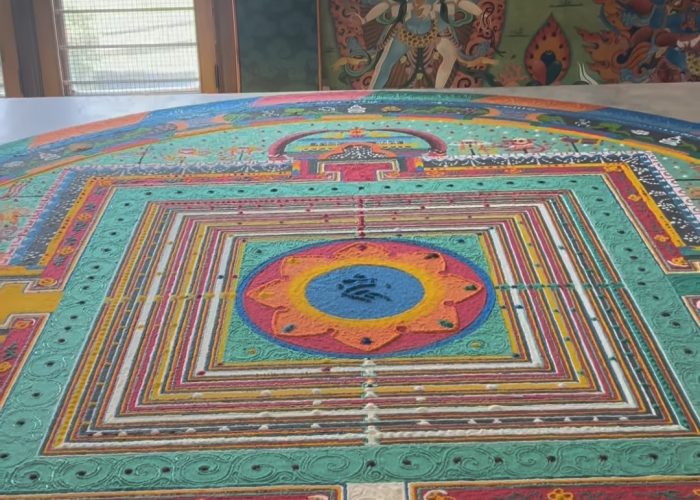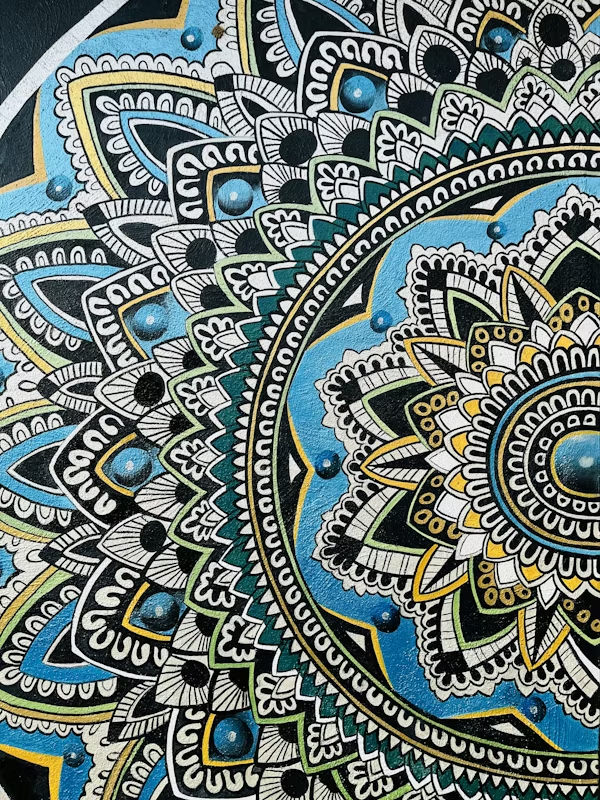They spent days creating Mandala-then let the wind take it away.

Life is a subject we don’t have a direct teacher for. And because we’re not educated on its rules, principles, and chapters, we often call it difficult or try to escape studying it.
If someone had taught us the rules of life the way we were taught Maths, English, or Science, perhaps we would have navigated life’s labyrinth a little more easily.
Life is the most crucial yet most complex subject to study. But we have no formal teacher to mentor us through its deep intricacies.
Most of our struggles stem from unawareness and lack of clarity. Just like a complex chemistry equation becomes easy when you know the right formula, life too becomes lighter when you understand its principles.
“Even the hardest subject becomes your favorite when you understand it and life is no exception.”
Life is a gift, yet when we fail to understand it, we often turn this gift into a curse. In moments when life feels unbearable, we seek escape which only makes it harder.
Where Do We Find the Teacher of Life?
The mystery of life is that no person will come to teach you life, but through every person, every situation, every struggle, and every experience, you learn a little more.
It isn’t about finding one teacher; it’s about collecting wisdom from every experience.
When you begin to observe your relationship with life itself, the whole spectacle of life becomes your teacher.
The Lesson We All Struggle With: Detachment
One of the hardest chapters of life is detachment.
Even in temporary attachments, we carry permanent pain — because we were never taught the law of impermanence.
Through the Tibetan ritual of the Sand Mandala, we can learn one of life’s greatest truths: everything changes.
Recently, I came across a short video that beautifully illustrated this. Watching it felt like a teacher explaining, on a blackboard, one of the greatest lessons of life:
Detachment because everything is impermanent.
What Exactly Is a Mandala?

A Sand Mandala is a traditional Tibetan Buddhist art form created with colored sand to represent the universe and the impermanence of life.
The word Mandala means “circle” in Sanskrit, symbolizing wholeness and unity.
Monks create these mandalas as a spiritual practice and meditation. Each intricate design represents a sacred space, often dedicated to a specific deity.
First documented in Tibet as early as the 11th century, the Tibetan term dul tson kyil khor means “made of powdered colors.” They are believed to emanate healing and purification.
Each grain of sand represents an element of the universe. The monks’ unwavering focus mirrors the mindfulness we should bring into each moment of our lives.
But the most striking aspect of a sand mandala is not its beauty — it’s its destruction.
The Process of Mandala: Creation and Dissolution
Drawing the Universe in Grains of Sand

For days, monks create the mandala — only to let the wind take it away.
This delicate painting, made with colored sand over 12 days, is destroyed on the 13th.
They begin with prayers, chanting, and meditation to purify their minds and the space. A blueprint of the mandala is drawn on a wooden platform using chalk or white pencil, following sacred geometric proportions passed down for centuries.
Using metal funnels called chak-pur, monks pour sand grain by grain. By rubbing one against another, a soft vibration allows sand to flow with precision.
The work proceeds from the center outward, representing the unfolding of the universe.
It takes teamwork, concentration, patience, and devotion — often for weeks.
The Ritual of Dissolution

Once complete, the mandala is blessed through chants and prayers. It becomes a sacred symbol of divine balance and harmony.
Then, on the 13th day, it is ritually destroyed, the sand swept into a single pile, symbolizing the impermanence of all life and material things.
Some of the sand is distributed as blessings.
The rest is poured into a river or ocean, returning its energy to nature.
“The mandala’s destruction is not loss — it’s release. It reminds us of that beauty and meaning exist even in impermanence.”
The Mandala’s Message: Wisdom in Impermanence
This intricate creation, made with immense patience and devotion, is ultimately destroyed reminding us that nothing lasts forever.
Like life itself, the mandala teaches that everything is in constant change. Its destruction may seem melancholic, but there’s hidden beauty and liberation in it.
Our lives are like mandalas :intricate, beautiful, and ever-changing. Clinging to them brings suffering. But accepting change brings peace.
“The sand mandala teaches us to cherish the present, to live each moment fully, without fear of its end.”
The Hidden Wisdom Behind Destruction
At first, it may feel confusing, why destroy something so magnificent? But the truth is, the process itself is the teaching.
While onlookers wait for the final artwork, the real reward lies in the journey of creation.
Through every grain of sand, the monks cultivate patience, focus, teamwork, dedication, and mindfulness.
In this silent rhythm, creation becomes a living meditation. Each grain placed is a breath, a moment of awareness.
When we realize that growth and transformation happen during the process, our attachment to outcomes naturally fades.
“It’s not the mandala we lose — it’s our illusion of permanence.”
Humans suffer because we believe that losing something means losing everything. But in truth, what we gain through the process — wisdom, strength, compassion is what stays with us.
The destruction of the mandala reveals that its value has already been given. Holding on would only create suffering.
Embracing the Lesson
The law of impermanence, symbolized through the Sand Mandala, mirrors our own lives: the beauty in creation, the joy in experience, and the peace in letting go.
In our fast-paced, material world, the mandala stands as a guiding light, reminding us that in the end, it’s not about what we’ve accumulated, but about the wisdom and compassion we’ve cultivated within.
“Letting go is not loss — it’s liberation.”
The mandala dissolves, but its message endures:
The process is the reward. The journey is the teacher. The letting go is the freedom.
When I first watched that reel of the Sand Mandala being swept away, I felt an unexpected ache as if something sacred had been lost.
But then, as I watched the monks’ calm faces, I realized they weren’t mourning the destruction; they were celebrating the release.

In that moment, I saw myself, how often I’ve held on to people, moments, and dreams long after their season had passed.
I understood that my pain didn’t come from what I lost, but from my resistance to letting go.
The Sand Mandala taught me that life’s beauty lies not in holding, but in participating fully while it lasts.
The end is never really the end; it’s simply a gentle reminder that we have received what we needed from that chapter.
So today, if you find yourself holding too tightly to something that’s meant to pass, remember the monks —
pouring their hearts into the sand, smiling as the wind carries it away.
If you aligned with my words, found them helpful, find more such life insights on my Instagram page:
Instagram posts
Latest Blog Posts

The Question that broke me open: What would you do with 1 Crore?

They spent days creating Mandala-then let the wind take it away.

Every Miracle in life starts with a Problem.
Evolve and Elevate: How to truly give? When does God accept you? and One thing that I do not want to leave behind.
Evolve and Elevate: Life goes on, Krishna consciousness is misunderstood and why is life all about struggling and suffering?
Evolve and Elevate: The Ultimate form of preparation, Actual life begins after the completion of materialistic life and how to live life on your terms.
Evolve and Elevate: Focus on what we can learn from other people; Basic principle of real peace and One thing I’ve learned from life.
Evolve and Elevate: When something happened that we wish had not, A Krishna conscious man is not in need of anything, A beautiful short love story.
Evolve and Elevate: Happiness isn’t in the future, two class of intelligent men, Hardest thing to do in a relationship
Evolve and Elevate: Hope has two daughters, controlling your senses, one line that can change our lives completely

Hi! This is Sarita Mian.
Welcome to The Locks and Keys where “Little will be valued and Huge shall be contained”

